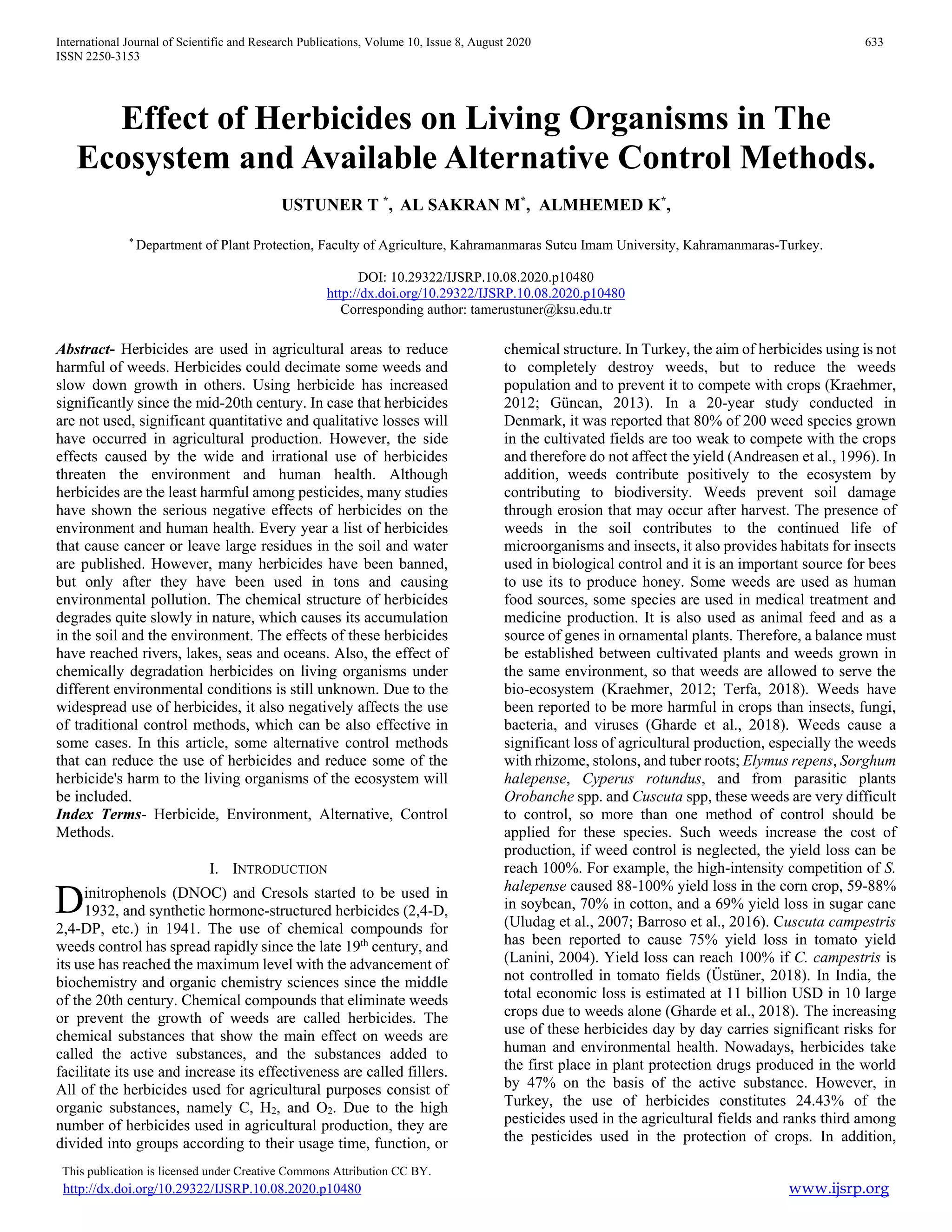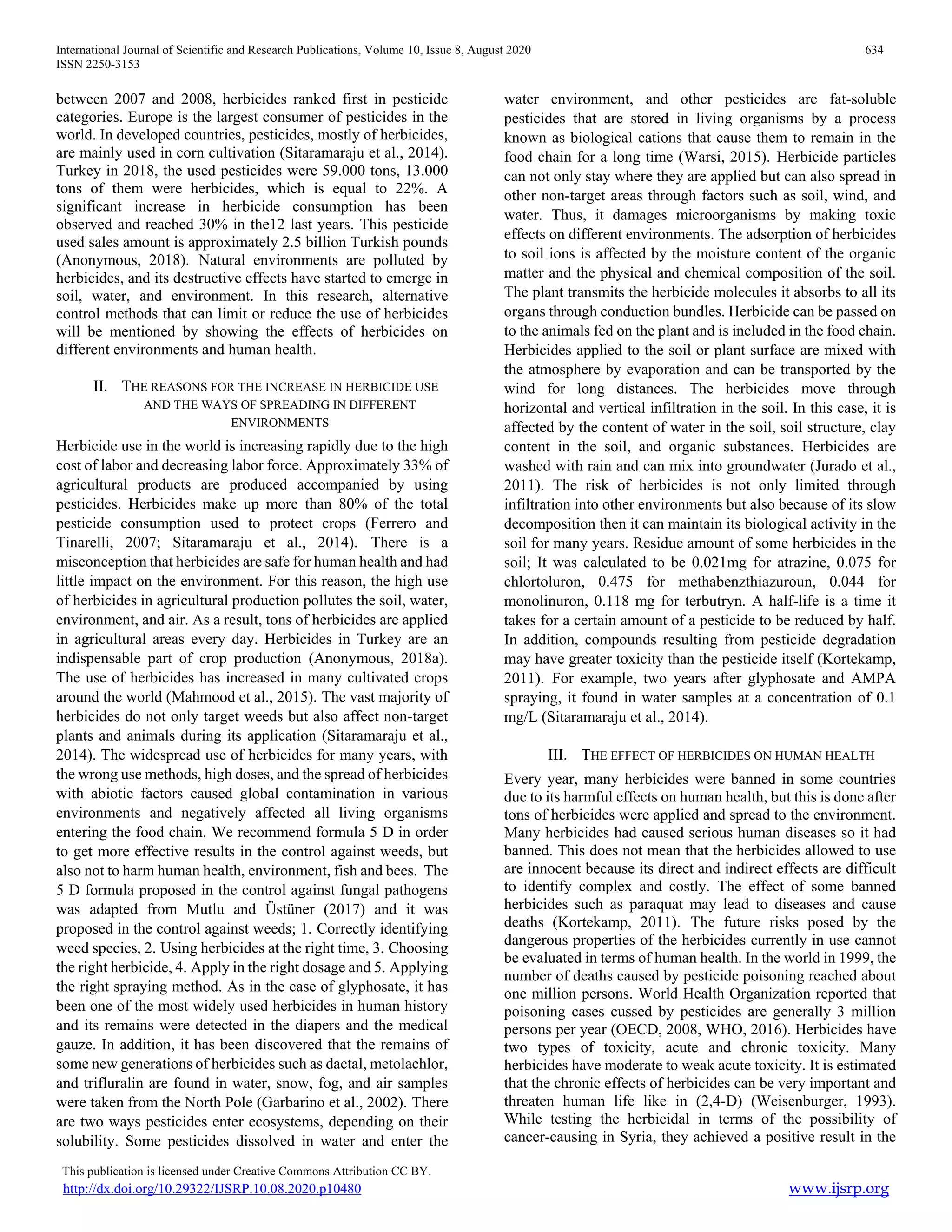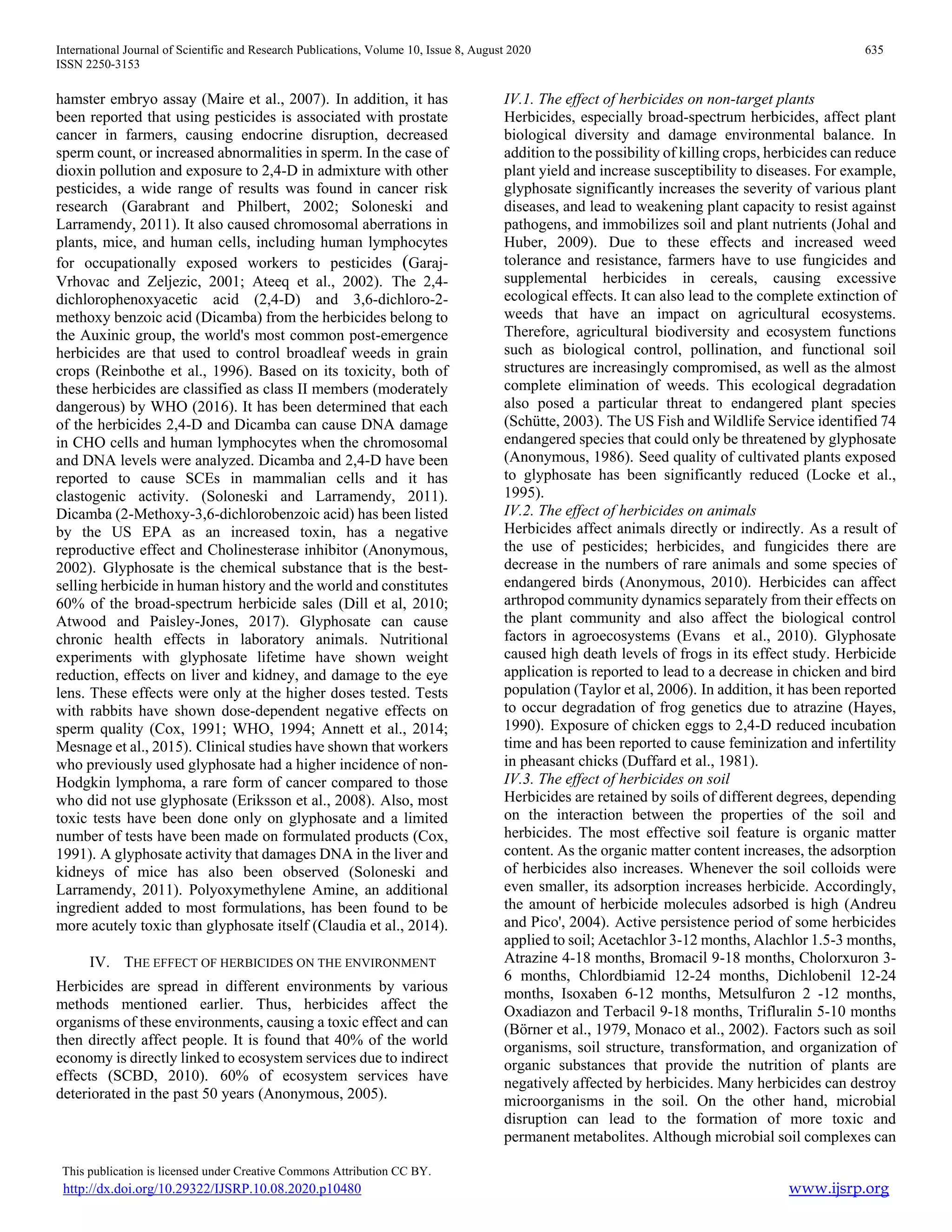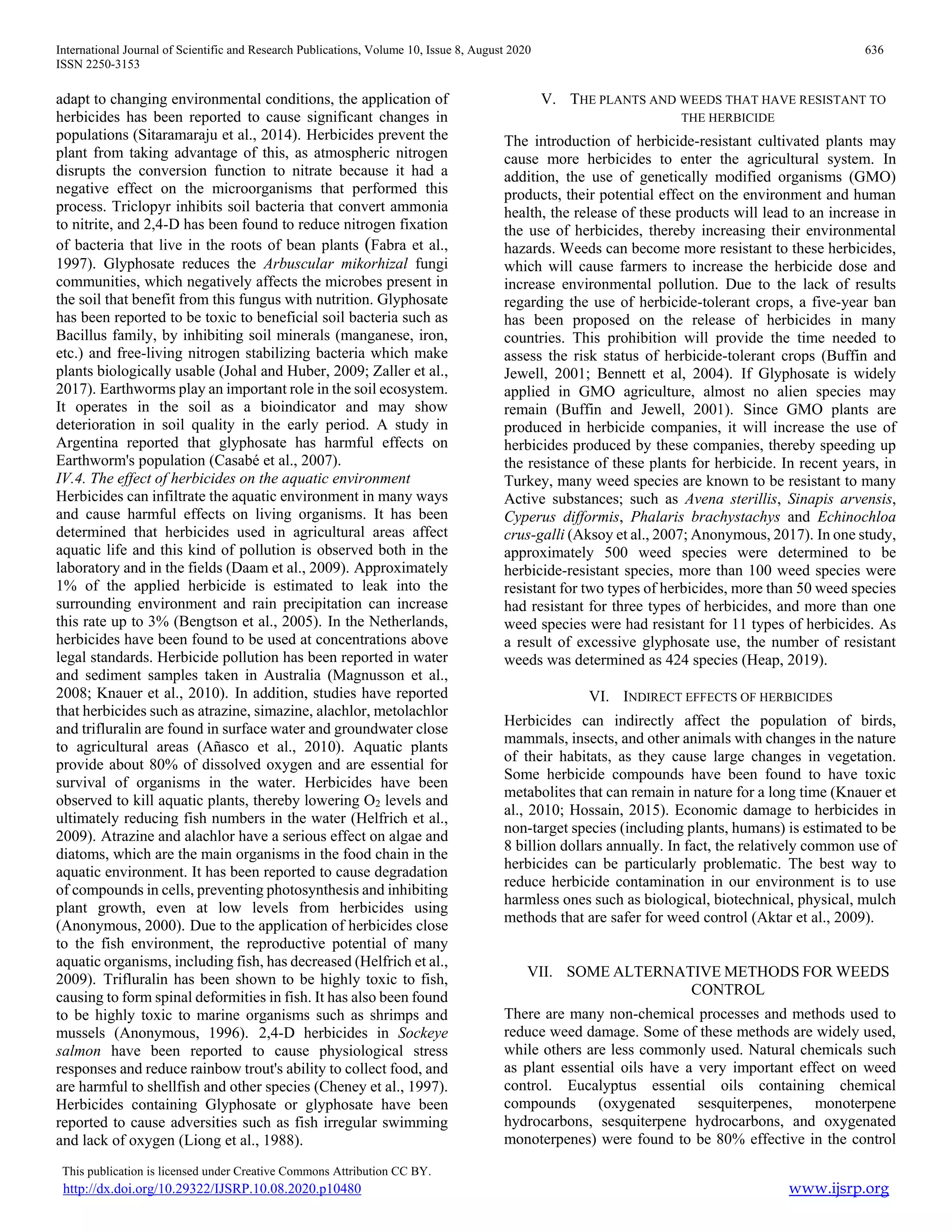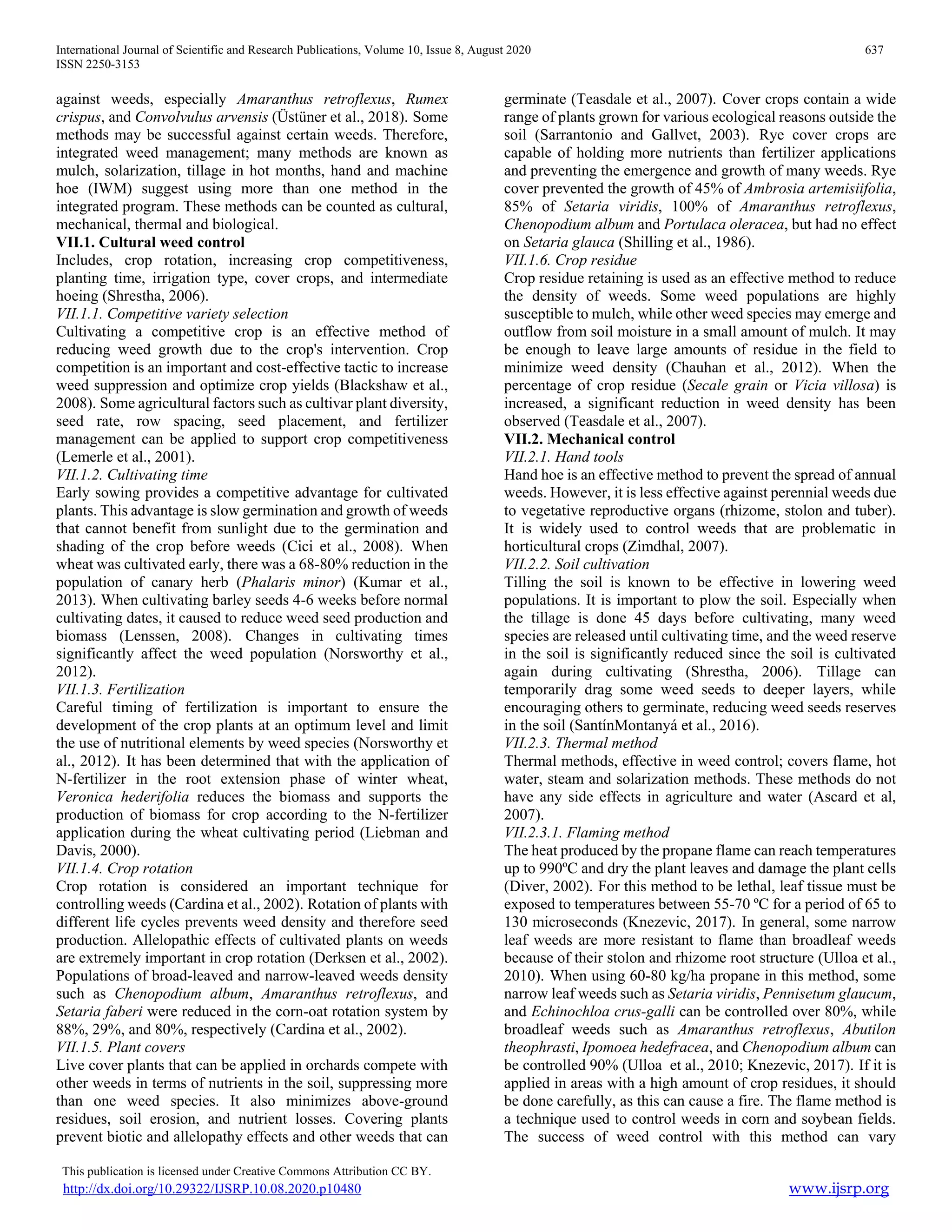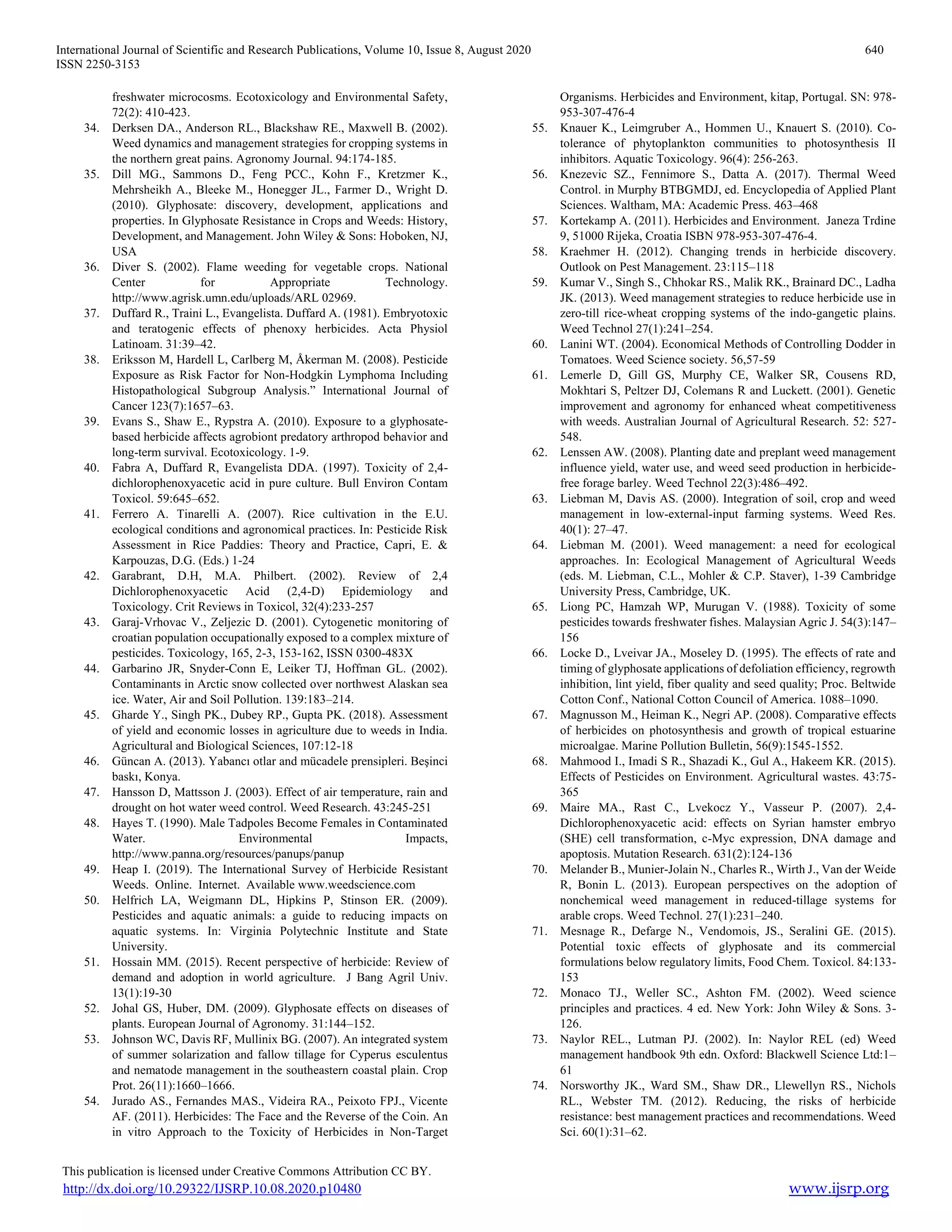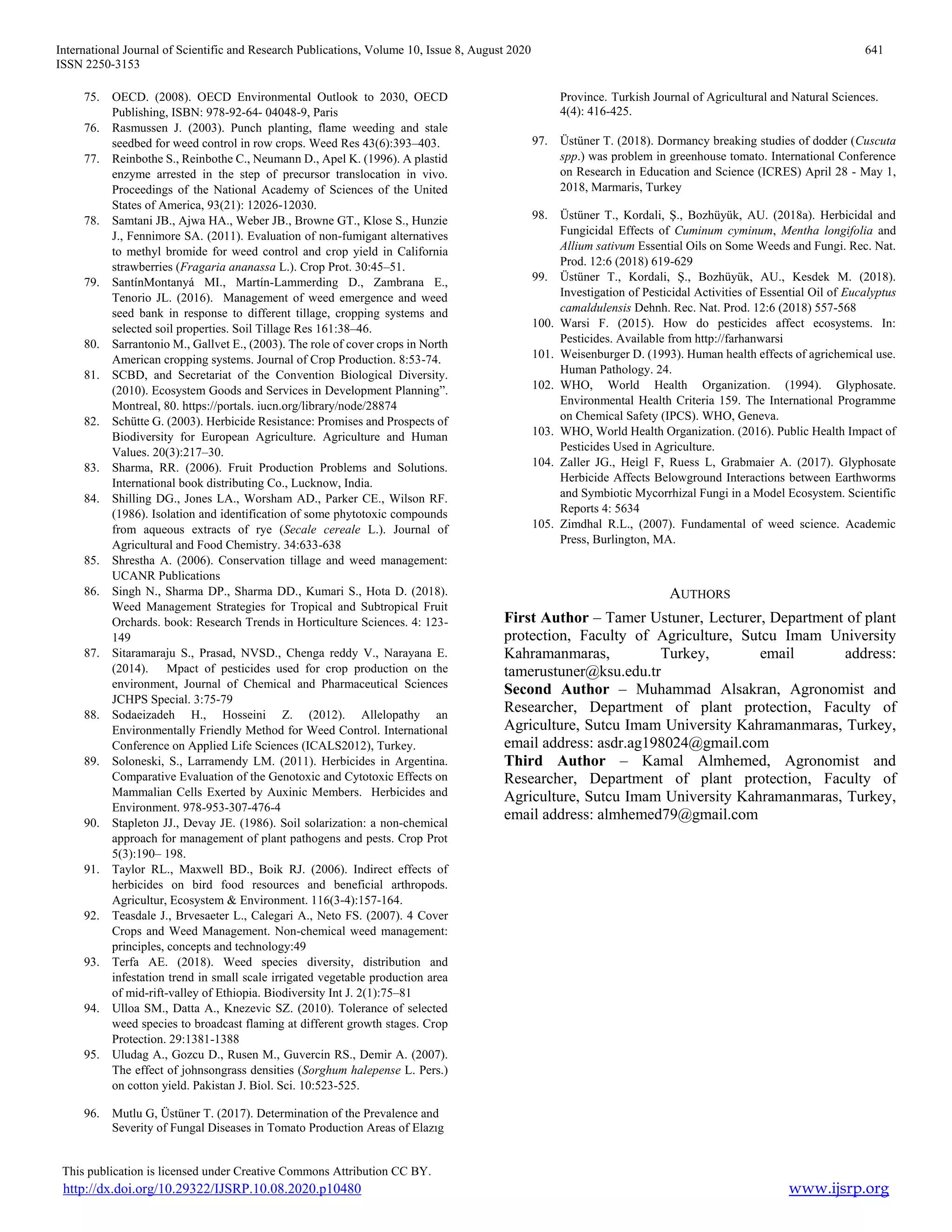This document summarizes the effects of herbicides on living organisms in ecosystems and discusses alternative control methods. It notes that while herbicides are widely used in agriculture, their overuse and misuse can harm the environment and human health. Specifically, it discusses how herbicides can pollute soil, water, and air and persist in the environment for long periods of time. It also outlines some of the health risks of certain common herbicides like glyphosate and 2,4-D, such as increased cancer risks and negative reproductive effects. Finally, it suggests that alternative control methods could help reduce herbicide usage and their associated harms.
